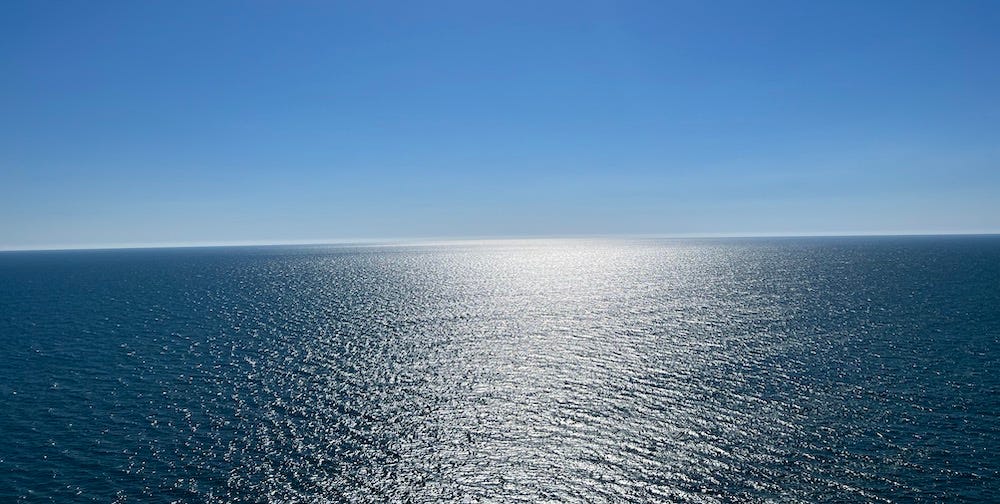The Sea Has Always Looked the Same
A View of the Ocean as a Connection to the Past
Visit Rome today and you’ll see the Colosseum, the Pantheon, and dozens of other Ancient Roman buildings. But the atmosphere is not the same. The buildings are mere relics, physical remains of days gone by.
When we look at them today, we aren’t really seeing what the Romans saw. For the Romans, these buildings were contemporary expressions of engineering expertise and cultural power, not ruins of a past civilization. And of course, the Colosseum wasn’t surrounded by tour buses, and the Pantheon wasn’t across from a giant advertisement for McDonalds.
Not so for the sea. Stand on an empty beach and cover your entire vision with the water. Now imagine that a ancient Roman ship is over the horizon, just out of sight. A person standing in the same spot, two thousand years ago, would see nearly the exact same image as you are seeing now. The color might be slightly different and the concept of colors themselves might vary, but for the most part, its appearance hasn’t changed.
The sea is a kind of timeless space, a visual image which stays the same as the world around it changes. Few other places remain so static: bridges are built over rivers, green hillsides are deforested, islands become inhabited, and empty plains are filled in with houses. Mountains are perhaps the only natural phenomenon similar to the sea, with many (like Mount Fuji in Japan) exerting a permanent influence on their surrounding cultures.
The sea has of course been a cultural symbol for thousands of years. It has represented nearly everything: dangerous journeys, the origin of life, freedom, power, fearsome monsters, the Jungian collective unconscious, and hundreds of other things.
Yet I couldn’t find any reference to the idea that the view of the sea has been largely unchanged through the millennia – and what aesthetic significance this has, if any.
When I was taking the photo above, a thought came into my head: thousands of years ago, someone stood on this beach and saw this exact view. That alone made me feel more connected to the past than any tourist-optimized ancient monument ever has.
It made me wonder about the future of tourism and how historical places could be more “alive” for tourists without resorting to actors in costumes. VR/AR might be a solution, especially if it reframes the tourist experience to be more like a film or theatrical performance and less like a museum.


I’ll think about that when I am in Amsterdam in September.